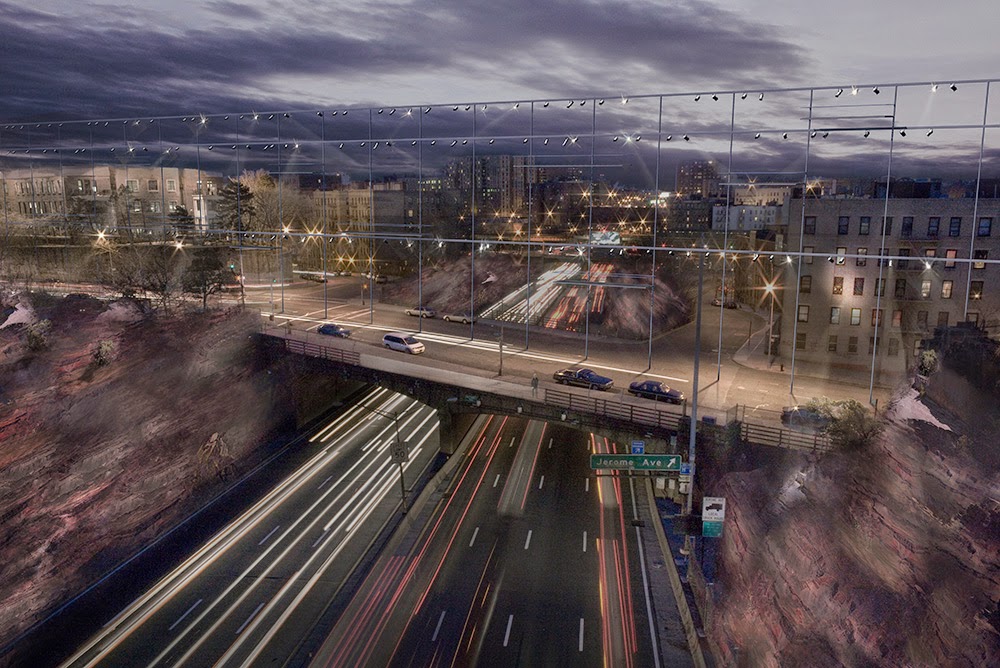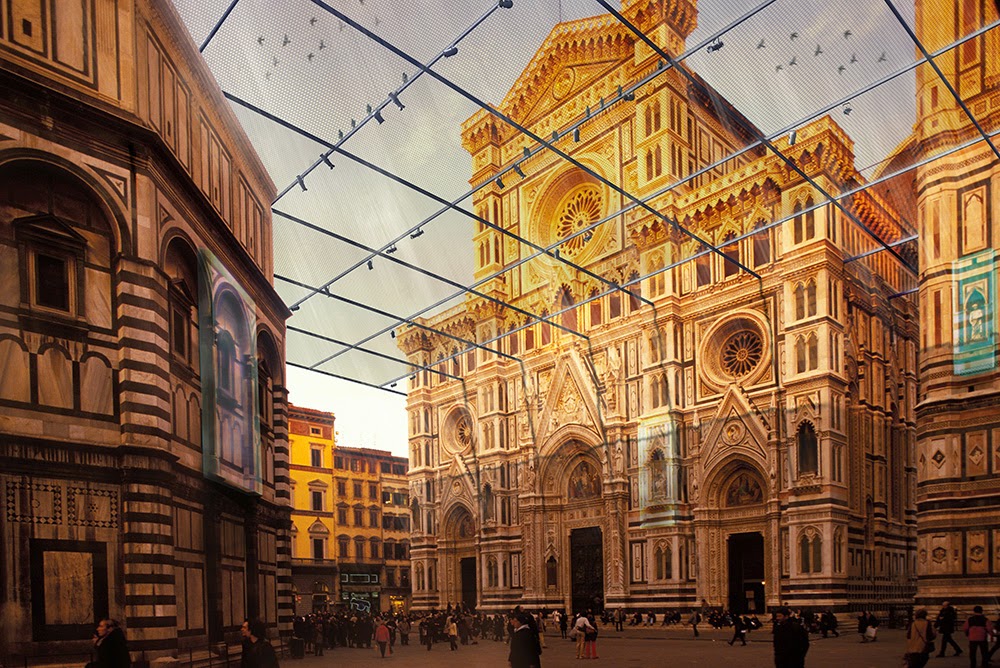 [Image: David Gissen, “Cross-Bronx Expressway,” with Victor Hadjikyriacou; from Landscape Futures].
[Image: David Gissen, “Cross-Bronx Expressway,” with Victor Hadjikyriacou; from Landscape Futures].
In case you’re reading this near Ithaca, New York, I thought I’d mention that I’ll be speaking at a conference this weekend at Cornell, called Spolia: Histories, Spaces, and Processes of Adaptive Reuse. Things kick off this evening with a lecture by Kate Orff.
What are spolia? From the conference brief:
Spolia refers to using scavenged materials for new (and often originally unintended) purposes in constructed environment[s]. This practice is millennia old, dating back to Ancient Egypt and perhaps beyond. Both extremely pragmatic and symbolically charged, spolia is a complex phenomenon; beyond mere recycling, it also has social, cultural, and even political dimensions. Many sites, buildings, structures of antiquity were repurposed into newer edifices, not only to facilitate the production of new form, but also to claim the cultural and political heritage of the donor structures.
I’ll be speaking on a panel tomorrow morning with two people I’m very excited to meet: art historian Dale Kinney from Bryn Mawr College and co-editor of Reuse Value, and Abraham Thomas, the newly appointed director of the Sir John Soane Museum in London.
 [Image: David Gissen, “Florence, Italy,” with Victor Hadjikyriacou; from Landscape Futures].
[Image: David Gissen, “Florence, Italy,” with Victor Hadjikyriacou; from Landscape Futures].
Here’s an excerpt from my abstract, in case you’re interested:
As the curator of a 2011 exhibition called Landscape Futures, I was able to commission new visual work from historian David Gissen. In the resulting project—called “Museums of the City”—Gissen explored what it would mean to foreground the apparatus of historical preservation in an urban environment. This meant populating downtown Florence, Italy, for example, with oversized lighting, display, and HVAC rigs, transforming the city’s center into an outdoor display; and doing the same in Central Park, such that carefully planted groves of trees and well-maintained lawns could be revealed for what they really are: an artificial landscape exhibition from the 19th century now hiding in plain sight as a recreational topography for present-day residents and tourists.
But it was Gissen’s look at what it would take to preserve the Cross-Bronx Expressway—a justifiably maligned urban megastructure—as a kind of stabilized ruin that seems most relevant here. Is the Cross-Bronx Expressway an example of spolia? More abstractly, to what extent can using a city’s transportation infrastructure become a museological experience?
Briefly, I’ll also discuss a half-serious proposal to preserve a freeway interchange in Baltimore, Maryland—not for reasons of aesthetics or historical significance, but, oddly enough, for reasons of topology. The interchange was due to be renovated, destroying its unique geometric arrangement, and a mathematician was thus calling for it to be saved. But are dysfunctional chunks of the city to be preserved even at the detriment of their intended use? How does infrastructure become museological?
Finally, I want to change topic altogether in order to look very briefly at one of the most remarkable private collections I have visited in recent years: a forensic collection of safes, vault doors, and entire sections of bank walls stored in a warehouse in New Jersey by a private security firm. Like something straight out of the work of artist Gordon Matta Clark—or perhaps a bizarre new version of the Sir John Soane Museum as rebuilt by the FBI—these broken doors, burnt safes, and heavily damaged architectural fragments are spolia under a different name.
I’ll use this example to discuss how architectural ruins and other spolia are used and reused in forensic analysis, exploring where forensics and archaeology become functionally indistinguishable.
 [Image: From a private collection of failed safes, vault walls, and other crime scene evidence; photo by Nicola Twilley].
[Image: From a private collection of failed safes, vault walls, and other crime scene evidence; photo by Nicola Twilley].
In any case, it should be a fun discussion and a great conference overall. Read more at the official website, and stop by if you are near Cornell’s OMA-designed Milstein Hall, where the conference takes place.
